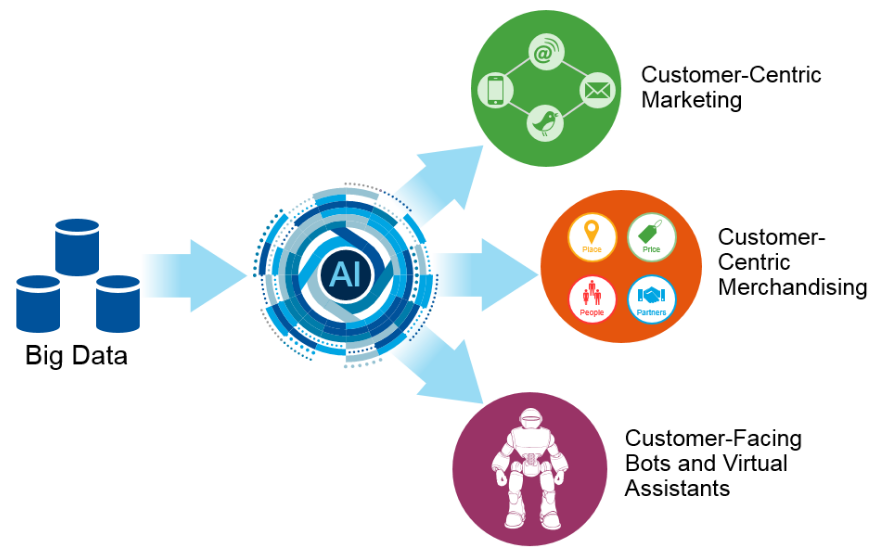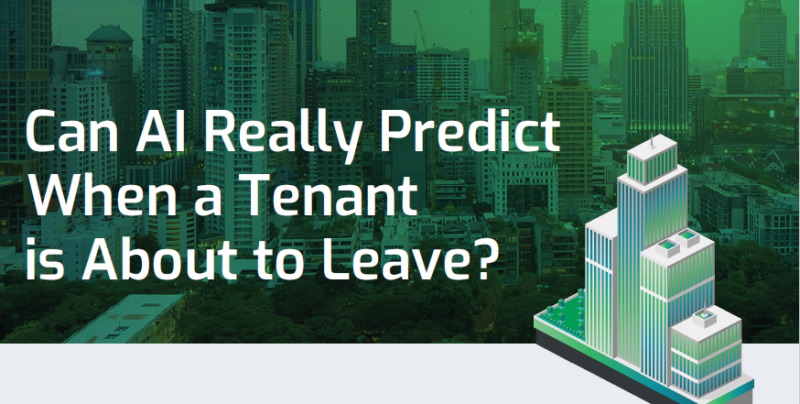Latest Disruptive Technologies Arrive to Commercial Real Estate
It’s an exciting time for the Real Estate industry. While the benefits of AI and Machine Learning are well acknowledged across dozens of verticals, CRE has traditionally been a few steps behind in terms of digital transformation. According to the Forbes Real Estate Council, this is all about to change, as traditional business models are usurped by the newest innovation and smart technology.

How Can I Benefit from a Predictive Model?
On a basic level, businesses are now able to answer many of the questions that were traditionally complex or impossible to answer using manual analytics. Traditionally, a client who wants to know how they are measuring up in terms of tenant renewal may have been able to find some Open Data on the topic, or loosely compare themselves to the market more widely. With a room full of engineers and months of sifting through datasets, manual analytics will never be able to accomplish what a well-trained AI model can achieve at the click of a button. Comparisons with industry or market averages are just the beginning. With Machine Learning technology, businesses can understand past mistakes using root cause analysis, recognize what’s happening in real-time, and even look to the future to make accurate predictions about what will happen next.
The first hurdle for many companies is recognizing that the data you need is likely to be already in your possession. Despite popular belief, you don’t need thousands or hundreds of thousands of datasets in order to benefit from Machine Learning algorithms. In fact, a few hundred is enough to start gleaning information from. Take customer data and then enrich it further with third-party information from disparate sources. This could be market information, social media, governmental data or more. By giving the computer this data, AI can train it to learn which features are predictive features, and which factors really make a difference.
Identifying which variables are significant can have a powerful effect on your business strategy. Let’s say for example that you are a landlord who puts a lot of your messaging and branding behind keeping your price point low. You pride yourself on being affordable and you believe that this is what keeps your tenants loyal and happy. Through predictive modeling, this gut feeling can be either reinforced or debunked. Underneath your instinct, it could be that the classification of the building, its attributes or location are actually what encourages your tenants to renew their leases time and time again. Raising your price, and thereby your bottom line, might not cause as much change as you fear, and your empty units could be filled by focusing on the real variables that make a difference.
For the first time, CRE will have answers to the questions that make a real difference to business optimization. It’s no surprise that the Deloitte 2019 CRE Industry Outlook report proves more than 80% of stakeholders believe that predictive analytics and business intelligence should be a priority for CRE. In fact, over the next 18 months, nearly two-fifths [of companies] plan to increase the use of these two technologies in their business decisions. ”
Where Else Can AI Make a Difference?
Tenant renewals are a great focus point for understanding how AI can revolutionize your business process, but they
are far from the only benefit. Our powerful algorithms provide a competitive advantage across the board.
Predictive Maintenance
Managers can now stay two steps ahead, with alerts
into the machines and systems that are about to fail.
Enriched data through building sensors, similar
machines, and even the amount of people using the
equipment takes you out of crisis mode, for good.Resource Management
You can plan ahead with the right teams at the right
time for maintenance, cleaning, supplies and more.
Never overspend preparing for a doomsday scenario
that doesn’t arrive, and don’t allow yourself to be
caught short without sufficient workforce for the load.Vendor Relationships
By establishing accurate benchmarks, you know
exactly what vendors are essential to your bottom line.
Identifying trends can give you new ways to partner
with relevant suppliers and resources, building your
network within the industry.Cashflow Planning
Monitor and track customer behavior, allowing you to
predict who will pay on time and who won’t.
With insight into cashflow problems before they
become a reality, you can prepare in advance and make
smart financial decisions for your business overall.





